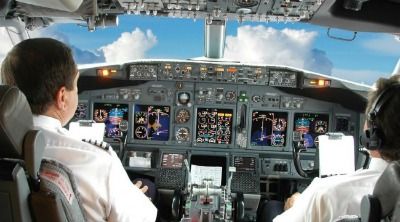
First officers who fly for passenger and cargo airlines now will be required to hold an ATP certificate and an aircraft type rating, the FAA said on Wednesday, although several exemptions are available. The final rule has been posted on the FAA website (PDF), and soon will be published officially in the Federal Register. Currently, first officers are required to hold only a commercial pilot certificate, which requires 250 hours of flight time. To qualify for an ATP, pilots must have logged 1,500 hours. The exemptions in the first-officer rule allow pilots who are younger than 23 — the minimum age to apply for an ATP — or who have less than 1,500 hours total time to qualify as first officers with “restricted privileges” if they are at least 21 years old and meet certain criteria.
To qualify for the restricted privileges ATP certificate, a pilot must fit one of these categories: ex-military pilots with 750 hours total time as a pilot; graduates holding a bachelor’s degree with an aviation major and 1,000 hours total time; graduates holding an associate’s degree with an aviation major and 1,250 hours; and pilots who are at least 21 years old with 1,500 flight hours.The new rule also requires a pilot to have logged a minimum of 1,000 flight hours as first officer in air-carrier operations prior to serving as captain. Also, applicants will have to meet enhanced training requirements to qualify for an ATP certificate, including 50 hours of multi-engine time and completion of a new FAA-approved training program.
“The rule gives first officers a stronger foundation of aeronautical knowledge and experience before they fly for an air carrier,” said FAA Administrator Michael Huerta. “With this rule and our efforts to address pilot fatigue — both initiatives championed by the families of Colgan Flight 3407 — we’re making a safe system even safer.” The new rule was required by a congressional mandate passed in 2010 in response to the 2009 Colgan Air crash in Buffalo. That act also drove the creation of new flight duty and rest requirements for pilots that were finalized in 2011, as well as new requirements for air-carrier training programs, expected this fall, that aim to ensure pilots know how to react properly in difficult operating environments.


































